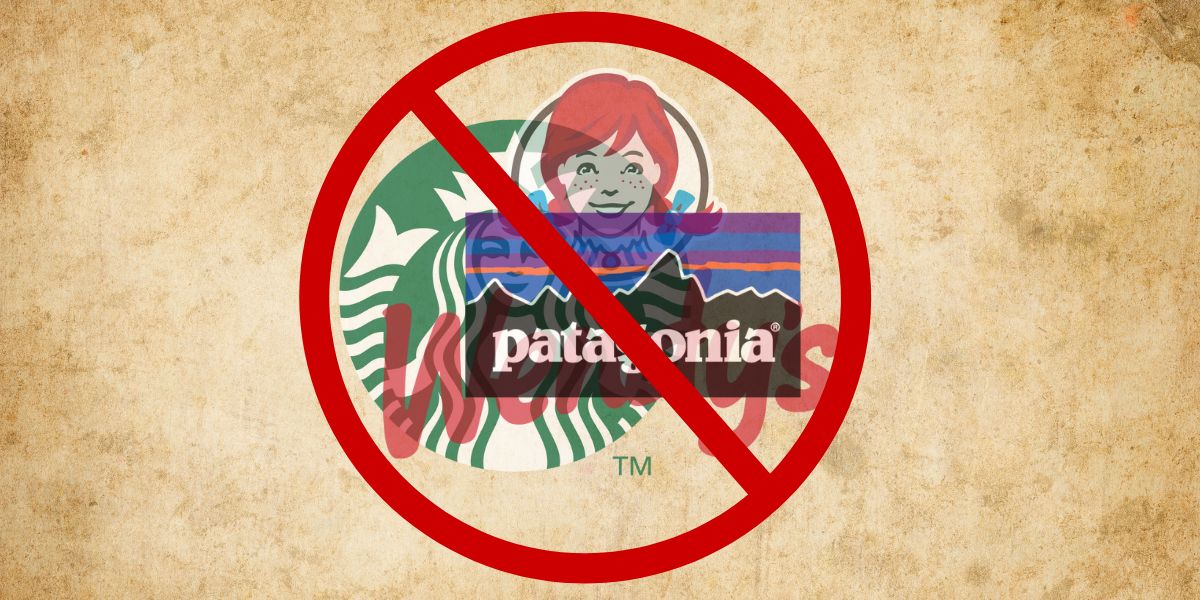We live in a world where big brand logos are more recognizable than our neighbours’ faces. If I ask you about an extravagant beauty brand or the latest shoe brand, you will probably have a list of names to debate. But is your brand loyalty really about love, or is it just a habit? Something you might have developed to cope with the advancing and ever-changing world dynamics, or simply because of someone’s influence. Just to fit in the so-called classy ‘Societal Standards’. And why not? I mean, remember the times when wearing a shirt without a logo was a fashion faux pas?
Fast forward to today, it’s more like a badge of honour. Think of it as being in a world where the worth of something is not measured by the logo it wears but by the stories it tells and the value it adds to your life.
After all, “Aren’t we more than what we buy?”
Now, what caused the consumers to cross the road? To escape the barrage of brand logos, of course! A growing number of rebels are ditching the mainstream chase while embracing the anti-brands with open arms and closed wallets.
But what is the anti-brand movement? Is it like those protests where some people come out on the streets? Well, the word ‘Anti’ in itself is revolting to some. But this movement isn’t your typical revolution. Let’s start with the basics.
Understanding the Anti-Brands
When trying to learn the concept of the anti-brand movement, it might feel like peeling an onion – each layer reveals a new depth of consumer sentiment and cultural shift. Integrally, the movement is disillusioned with traditional branding, along with a yearning for authenticity and the growing consciousness of people about the environmental and social impact of their purchasing decisions. There are no banners and no slogans. They just have a collective nod to the idea that maybe we don’t really need the overhyped and expensive logos necessarily that flood our daily lives, urging us to buy more, want more, and consume more.
This is the anti-movement ethos! That a product’s worth shouldn’t be dictated by its market visibility or the celebrity endorsing it, but by its utility, its impact on the planet, and the integrity of the people who make it.
Born from the collective emotions of frustration and enlightenment, this movement traces its roots back to the counter-culture brand waves of the past that have challenged societal norms and questioned the status quo. From the simple living ethos of the 1960s to the punk movement’s rejection of mainstream culture. In the 1970s and 1980s, the seeds of the anti-brand movement were sown by generations of individuals disillusioned by the excesses of consumer culture. Today, it manifests a more organized form, driven by the power of social media and a more globally connected world that amplifies voices calling for change.
The principle? Authenticity, Transparency, Sustainable Brands, and ethical production; something that reflect a broader desire for a more meaningful connection with the products we use and the companies we support. It’s about products that dare to stand out without the armour of a logo, providing their worth through quality and purpose. It’s a movement that doesn’t just challenge brands to be better but challenges us as consumers to be more mindful, more discerning, and more engaged in the impact of our consumption.
Why Consumers Are Embracing Anti-Brands
Why are people ditching the brand bandwagon for something more understated? It’s simple. We’re tired. Tired of being billboards, tired of the relentless pursuit of the next “big thing”, and tired of the hollow promise that buying certain brands will somehow make us better, cooler, and happier?
Sustainable brands, with their unvarnished approach to marketing strategies and emphasis on substance over superficiality, naturally resonate with this desire. They offer a narrative that feels more real, more relatable, and infinitely more trustworthy than the often hyperbolic claims of mainstream marketing.
The digital era has ushered in a newfound power for consumers to research, connect with, and mobilize around brands that mirror their values and aspirations. Social media platforms and online communities have become fertile ground for branding alternatives to flourish, allowing them to build loyal followings based on shared ideals rather than sheer market force.
The rise of anti-brands is not merely a rejection of traditional consumerism but rather an embrace of a more thoughtful, principled approach to what we buy and why we buy it.
Examples of Successful Anti-Brands
Let’s take a stroll through the Hall of Fame of anti-brands. These brands have turned the tables on conventional marketing, proving that a focus on values, authenticity, and community can lead to profound success.
Patagonia: The Rebel of the Retail World
The poster child of the anti-brand movement, Patagonia, once dared its customers not to buy its jackets. Their “Don’t Buy This Jacket” was a successful anti-branding campaign where they highlighted the environmental cost of consumerism in a bid to encourage responsible purchasing. By emphasizing the brand’s commitment to sustainability and using clever reverse psychology, it got people to reconsider their consumption patterns. This clever marketing tactic effectively engaged customers by promoting awareness about their environmental impact.

Starbucks: Simplifying to Amplify
Now, here’s a twist. Starbucks, despite being a giant in the coffee world, took a bold step by simplifying its logo, removing its name, and relying on its iconic siren to do the talking. By doing so, it brewed a bold new identity that said, “You know us. Let’s go beyond the name.” It’s a lesson in brand evolution, keeping the essence while shedding the excess. It was a risky move that paid off, signalling a shift towards a more subtle branding approach.

Wendy’s: A Fast Food Maverick
Fast food and sass—an unlikely combo, but Wendy’s has mastered it. With a Twitter game stronger than its coffee, Wendy’s has become the sass queen of fast food. By adopting a tongue-in-cheek, almost anti-corporate voice on social media. The company stands out in a sea of sameness, endearing itself to consumers tired of the same old marketing spiel.
After all, a little personality goes a long way!

The Bigger Picture
In a world where “sustainable brands” and “branding alternatives” are more than just buzzwords, the anti-brand movement is reshaping the landscape of marketing. In order to build closer relationships with customers. It encourages businesses to review their marketing strategies and place a higher priority on authenticity and purpose. This strategy places a strong emphasis on the value of honest involvement in order to create deeper connections with customers.
This movement isn’t just about going all “No logo” or making snarky tweets. It’s a reflection of a deeper shift in consumer consciousness. It’s a conversation about what we stand for and how we choose to express it.
So, as we navigate this brave new world of anti-branding. Let’s remember that it’s not just what’s on the outside that counts. It’s about what a brand stands for, its impact on the world, and how it resonates with the people it serves. In the end, maybe it’s not about being anti-brand at all, but about being pro-consumer, pro-planet, and pro-authentic.
Now, isn’t that a thought worth pondering over your next logo-free cup of coffee?
